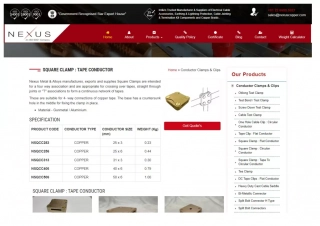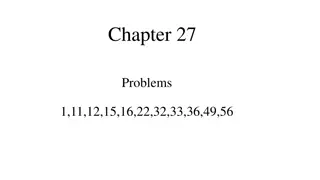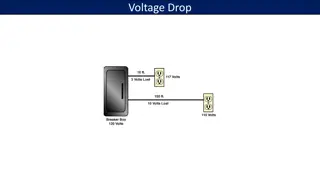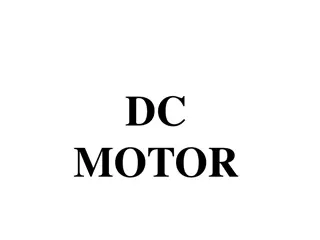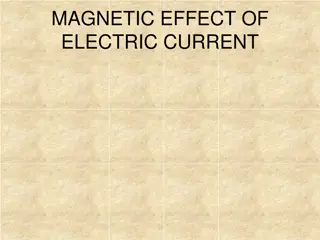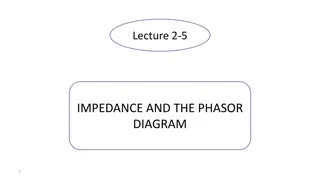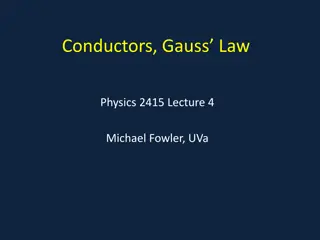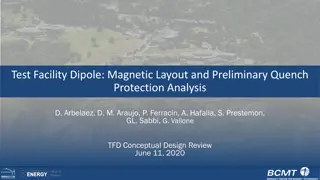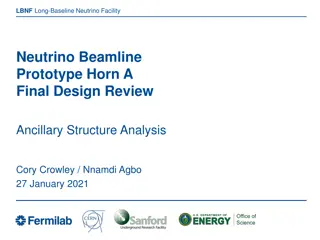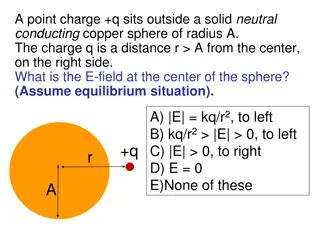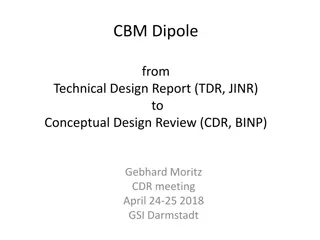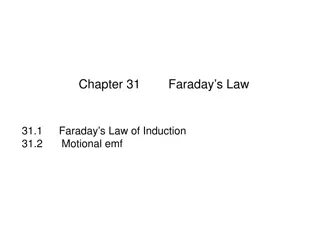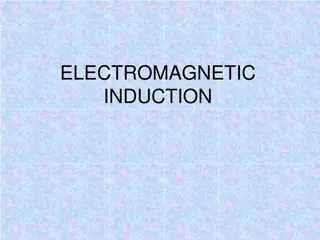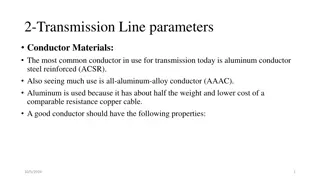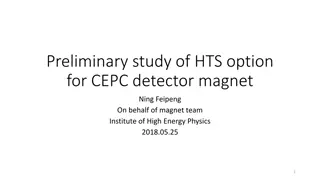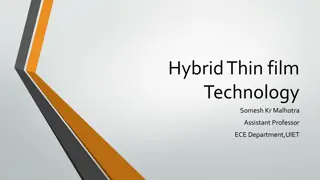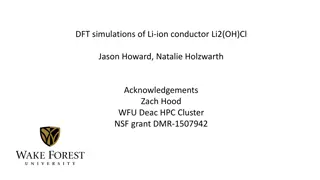Square Clamp Flat Conductor
Nexus Metal & Alloys is one of the leading manufacturers, exporters, and suppliers of world-class Square Clamp Flat Conductor, Square Clamps, Square Conductor Clamp, Square Tape Conductor Clamp, and Square Clamp Flat at very cheap rates from Mumbai, Maharashtra, India.
1 views • 3 slides
Electrical Conductor Ampacity Calculation Scenarios
Various scenarios are presented involving the calculation of allowable ampacity for different types of electrical conductors connected to circuit breakers with temperature limitations. The calculations consider factors like conductor material, size, temperature ratings, and ambient conditions to det
0 views • 140 slides
Physics Chapter 27 Practice Problems
The chapter 27 problems involve concepts related to current, drift speed of electrons, current density, resistance, resistivity, temperature effects on resistance, and power calculations. The problems cover scenarios such as cathode ray tubes, aluminum wires, gold wires, tungsten wires, conductor re
0 views • 12 slides
Understanding Voltage Drop in Electrical Systems
Electrical calculations often focus on current or voltage drop to determine proper conductor sizes. Excessive voltage drop can lead to issues like flickering lights, poor heating, and overheating of motors, requiring attention to wire sizes and the National Electrical Code recommendations. Explore t
0 views • 20 slides
CIGRE Canada Study Committees Update Meeting 2021: Advancing Overhead Lines Technology
Study Committee B2 focuses on improving overhead lines technology, ensuring reliability, and environmental compatibility. The Canadian representative, Pierre Van Dyke, plays a key role in Technical Direction and various advisory groups. Working groups within SC B2 address diverse topics such as dyna
0 views • 12 slides
Understanding DC Motors: Principles and Operations
The introduction to DC motors covers the types of DC machines, such as generators and motors, and explains how they convert energy. By exploring the force on a current-carrying conductor in a magnetic field, the principles behind DC motor operation are clarified. The magnitude and direction of force
0 views • 20 slides
Exploring the Conductivity of Metals in Electrical Circuits
This science fair project investigates how different metals affect the amount of current in an electrical circuit. It explores why metals are used to conduct electricity, which metal is the best conductor, and includes a hypothesis based on research findings. The experimental design involves setting
0 views • 15 slides
Exploring the Magnetic Effect of Electric Current
Understanding electromagnetism involves recognizing how an electric current in a conductor generates a magnetic field around it. This phenomenon was first observed by Hans Ørsted in 1820, leading to discoveries about magnetic field patterns for various conductor shapes. By studying straight wires,
0 views • 30 slides
Understanding Impedance and Phasor Diagrams in AC Circuits
Resistive elements in AC circuits exhibit zero phase shift between current and voltage due to their angles. Inductors introduce inductance when connected to AC sources, generating magnetic flux that affects conductor charges. Faraday and Lenz's laws explain induced voltage and current direction base
0 views • 18 slides
Development of Ultra-Thin Magnets for FCC-ee Experiments
Overview of the motivation, concept, and design principles behind the development of ultra-thin magnets for FCC-ee experiments, focusing on obtaining transparent magnets, high-strength conductor development, magnet design, quench protection, and vacuum vessel transparency. The project aims to create
0 views • 9 slides
Understanding Three-Way and Four-Way Switches in Electrical Systems
Explore the intricacies of Three-Way and Four-Way switches with detailed diagrams and explanations. Learn about wiring configurations, power flow, and essential rules for installation. Gain insights into switch types, common terminals, and conductor connections for effective electrical control setup
0 views • 14 slides
Understanding Electric Circuits: Current, Voltage, and Resistance
Electric circuits involve the flow of electric current through conductors with varying levels of resistance. Current (I) is the amount of charge passing through a point in a wire per unit of time, measured in amperes. Voltage (V) is the potential difference required to make electrons flow in a condu
0 views • 25 slides
Insights on Conductors and Gauss Law in Physics
Explore electric fields in and near conductors, understand Gauss Law, and delve into the behavior of electrons inside a conductor. Discover why there can be no electric field inside a conductor in electrostatics and learn about the distribution of charges on a conductor's surface. Consider scenarios
4 views • 19 slides
Test Facility Dipole Magnetic Layout & Quench Protection Analysis
This presentation discusses the magnetic layout and preliminary quench protection analysis for the Test Facility Dipole. It covers conductor assumptions, critical current density scaling, and HEPdipo block coil designs, including graded and non-graded options. The goal is to achieve higher performan
0 views • 22 slides
Ancillary Structure Analysis for Long-Baseline Neutrino Facility Horn Prototype
The ancillary structure analysis for the Horn A prototype at the Long-Baseline Neutrino Facility involves detailed documentation tracking, FEA projects, and design considerations such as conductor stiffness and spider loading. The analysis approach includes rigorous documentation and peer review pro
0 views • 25 slides
Understanding Electric Fields and Charges in Different Scenarios
Explore various scenarios involving electric fields and charges such as the E-field at the center of a conducting sphere, the effect of total charge on E-field, E-field above a charged conductor, charge distribution on the surface of a copper sphere with a hollow, field inside a charged non-conducti
0 views • 9 slides
Methods of Solving Electrostatics Problems in Conductor Systems
Understanding problem-solving methods in electrostatics, including the use of images and fictitious point charges to analyze interactions between conductors and charges. Exploring scenarios with semi-infinite and finite conductors, grounded and insulated spheres, and the concept of equipotential sur
0 views • 36 slides
Update on Dipole Model Targets for MDP General Meeting May 17, 2017
The update covers the targets and specifications for the MDP 16 T Dipole model discussed during the general meeting on May 17, 2017. It includes details such as magnet dimensions, conductor specifications, operational parameters, geometrical field harmonics, coil stress, and more. The objectives and
0 views • 11 slides
Overview of CBM Dipole Magnet Design and Development
The CBM Dipole Magnet project, transitioning from Technical Design Report to Conceptual Design Review, involves key milestones such as the contract with BINP and recommendations from CDR meetings. The main parameters, construction details, coil structure, and conductor specifications are highlighted
0 views • 21 slides
Understanding Faraday's Law of Induction and Lenz's Law
Faraday's Law of Induction states that a changing magnetic field induces an electromotive force (emf) in a conductor, producing an induced current. Lenz's Law complements this by determining the direction of the induced current to oppose the change in magnetic field. This phenomenon is demonstrated
0 views • 23 slides
Understanding Electromagnetic Induction and Alternating Current Generation
Electromagnetic induction explains how voltage is induced in a conductor or coil when exposed to a magnetic field, with factors affecting the induced voltage. It also covers the generation of electricity through magnet rotation in coils and transformers' role in voltage adjustment. The process is cr
0 views • 37 slides
Types of Conductors in Transmission Lines
Aluminum conductors, such as AAC, AAAC, ACSR, and ACAR, are commonly used in transmission lines due to their high conductivity, tensile strength, light weight, and resistance to corrosion. AAC is known for its good conductivity but limited strength, while AAAC offers better mechanical strength and c
0 views • 17 slides
Preliminary Study of HTS Option for CEPC Detector Magnet
This study explores the use of high-temperature superconductors (HTS) for the CEPC detector magnet, focusing on Bi-2223, Bi-2212, and YBCO conductors. It discusses the properties of each conductor, their suitability for the magnet, and the decision to choose YBCO. The advantages and challenges of ut
0 views • 14 slides
Understanding Hybrid Thin Film Technology in Electronics
Hybrid thin film technology, spearheaded by Assistant Professor Somesh Kr. Malhotra, revolutionizes electronics with its superior circuit density and eco-friendly advantages. Thin film circuits, employing conductor, resistor, and dielectric layers, are thinner and more intricate than thick film circ
1 views • 10 slides
Understanding Lithium Ion Conduction in Li2(OH)Cl Through DFT Simulations
DFT simulations were conducted on the lithium ion conductor Li2(OH)Cl to investigate its low and high-temperature phases. The motivation behind the study was to uncover the structural features impacting the phase transition and diffusion properties of the material. The background highlighted two pha
0 views • 16 slides
